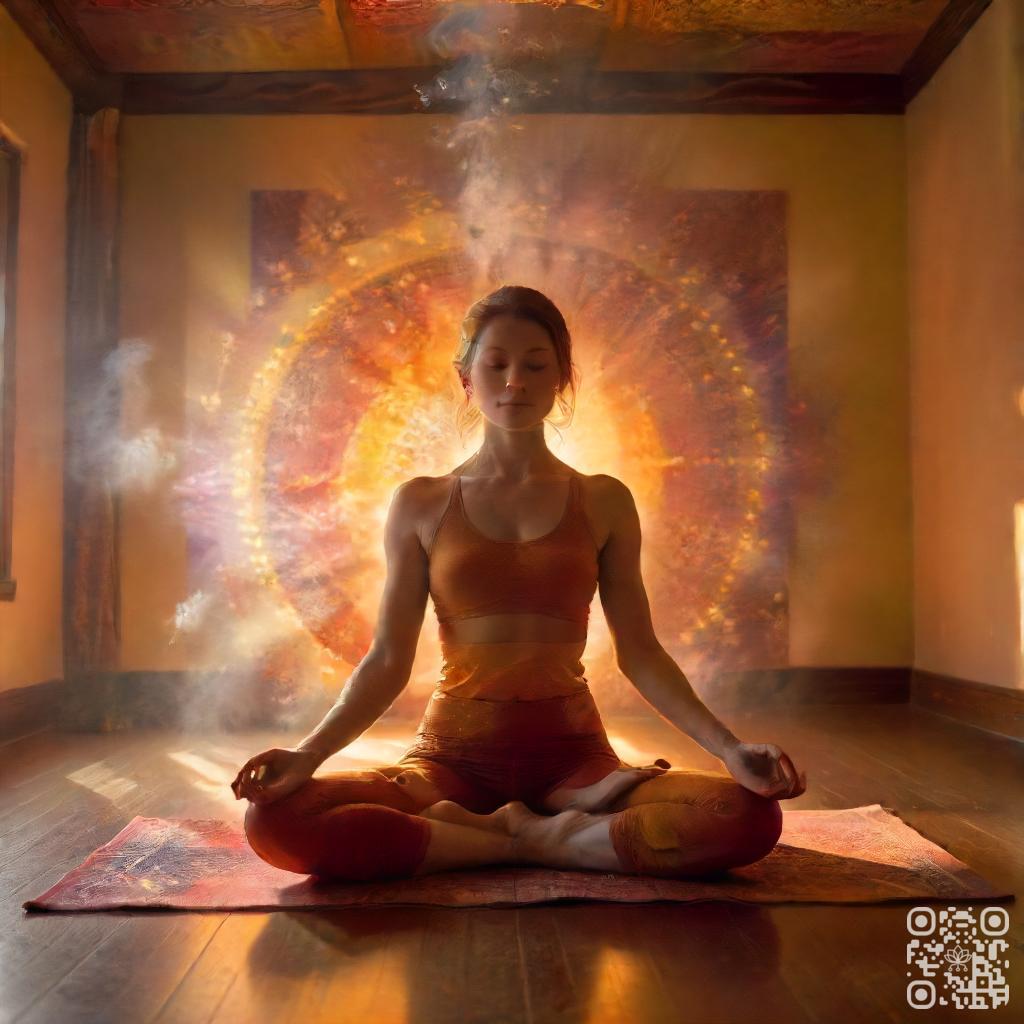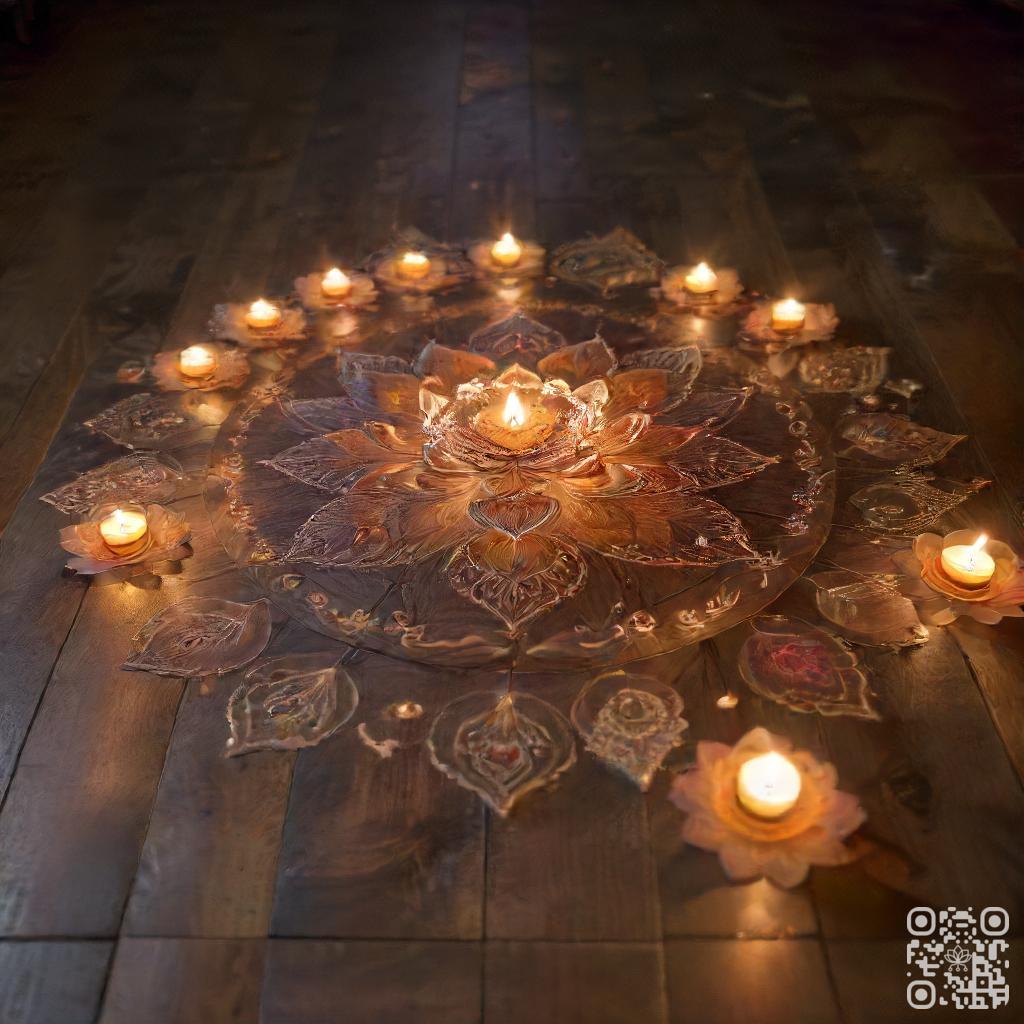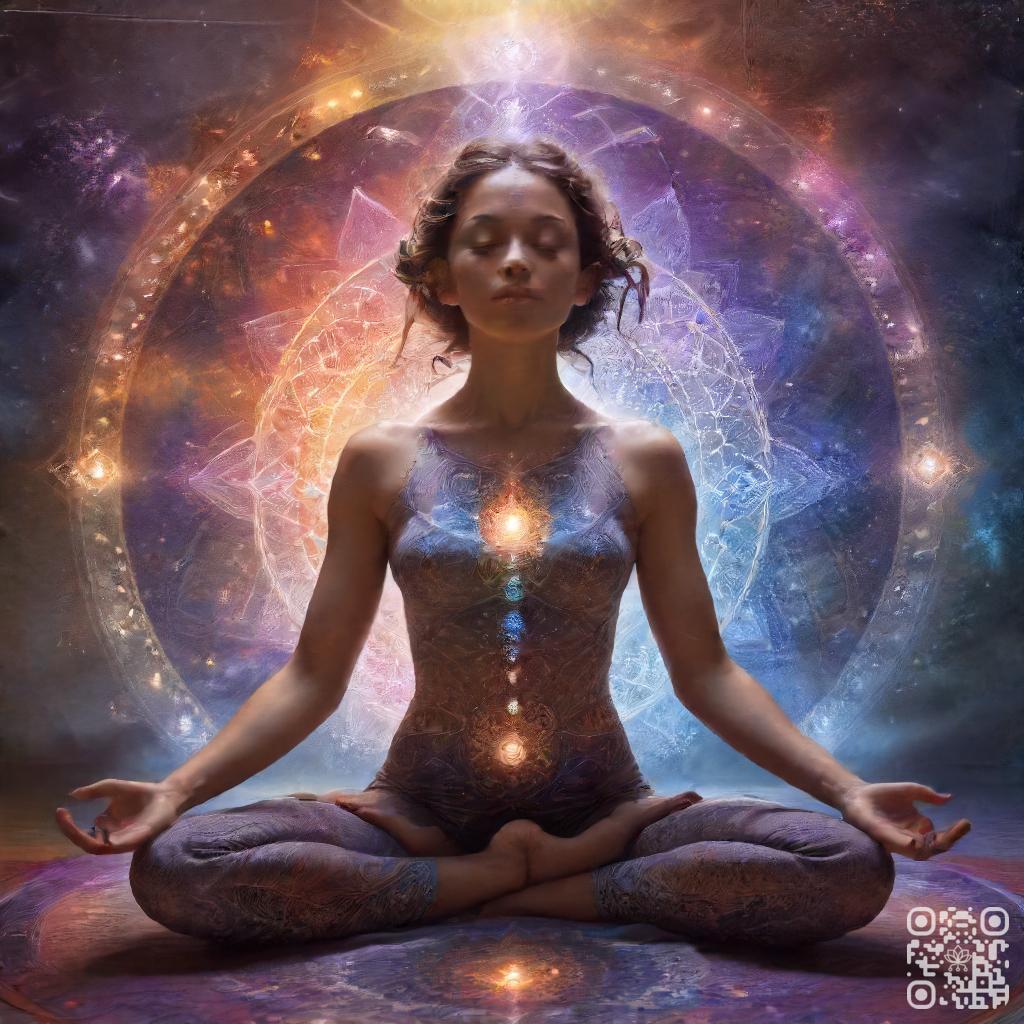Chakra yoga sequences are designed to balance the seven energy centers in the body, known as chakras. Each chakra is associated with specific physical, emotional, and spiritual aspects of our being.
By practicing yoga poses that target each chakra, we can release blockages and promote healing. These sequences can help improve overall well-being, increase self-awareness, and deepen our connection to the world around us.
In this article, we will investigate the benefits of chakra yoga and provide examples of poses for each chakra.
Apprehending the Chakras
In this section, we will provide an in-depth apprehending of the seven chakras, their significance, and how they impact our overall well-being. Each chakra represents a different aspect of our being, and by balancing and aligning them, we can achieve harmony and optimal health.
1. Overview of the 7 Chakras
The seven chakras are energy centers located along the spine, from the base to the crown of the head. They are:
| Chakra | Location | Associated Qualities |
| 1. Root Chakra | Base of the spine | Grounding, stability, and survival |
| 2. Sacral Chakra | Lower abdomen | Creativity, passion, and sexuality |
| 3. Solar Plexus Chakra | Upper abdomen | Personal power, confidence, and self-esteem |
| 4. Heart Chakra | Center of the chest | Love, compassion, and forgiveness |
| 5. Throat Chakra | Throat region | Communication, self-expression, and truth |
| 6. Third Eye Chakra | Between the eyebrows | Intuition, perception, and inner wisdom |
| 7. Crown Chakra | Top of the head | Spirituality, connection to the divine, and enlightenment |
2. The Root Chakra – Muladhara
The Root Chakra, also known as Muladhara, is the foundation of the chakra system. It is associated with our sense of grounding, stability, and survival. When this chakra is balanced, we feel secure, confident, and connected to the earth. To balance the Root Chakra, activities such as walking barefoot in nature, practicing yoga, or using grounding crystals like hematite can be beneficial.
3. The Sacral Chakra – Svadhisthana
The Sacral Chakra, or Svadhisthana, is located in the lower abdomen and is linked to our creativity, passion, and sexuality. When this chakra is balanced, we experience a healthy flow of emotions, creativity, and sensuality. To balance the Sacral Chakra, activities like dancing, painting, or practicing mindfulness can help awaken and harmonize this energy center.
4. The Solar Plexus Chakra – Manipura
The Solar Plexus Chakra, known as Manipura, is located in the upper abdomen and is associated with personal power, confidence, and self-esteem. When this chakra is balanced, we feel a sense of empowerment, purpose, and motivation. To balance the Solar Plexus Chakra, engaging in activities that boost self-confidence, such as affirmations or practicing martial arts, can be beneficial.
5. The Heart Chakra – Anahata
The Heart Chakra, or Anahata, is located in the center of the chest and is the source of love, compassion, and forgiveness. When this chakra is balanced, we experience harmonious relationships, emotional healing, and unconditional love. To balance the Heart Chakra, practicing acts of kindness, practicing gratitude, or engaging in heart-opening yoga poses can help open and balance this chakra.
6. The Throat Chakra – Vishuddha
The Throat Chakra, known as Vishuddha, is located in the throat region and is associated with communication, self-expression, and truth. When this chakra is balanced, we can effectively express ourselves, speak our truth, and listen attentively. To balance the Throat Chakra, activities such as singing, journaling, or practicing deep breathing exercises can help clear and activate this energy center.
7. The Third Eye Chakra – Ajna
The Third Eye Chakra, or Ajna, is located between the eyebrows and is connected to our intuition, perception, and inner wisdom. When this chakra is balanced, we have clarity of thought, enhanced intuition, and a deep connection to our inner guidance. To balance the Third Eye Chakra, practicing meditation, journaling, or engaging in activities that stimulate the imagination can help awaken and align this chakra.
8. The Crown Chakra – Sahasrara
The Crown Chakra, known as Sahasrara, is located at the top of the head and represents our spiritual connection, consciousness, and enlightenment. When this chakra is balanced, we experience a sense of higher awareness, connection to the divine, and spiritual growth. To balance the Crown Chakra, activities such as meditation, practicing gratitude, or spending time in nature can help activate and align this energy center.

Preparing for Chakra Yoga
In this section, we will probe the essential steps to prepare for a chakra yoga practice. From creating a sacred space to gathering the necessary props, these preparations will augment your experience and help you connect with your chakras on a deeper level.
1. Creating a Sacred Space
To fully immerse yourself in the practice of chakra yoga, integral to create a sacred space. Find a quiet and peaceful area in your home where you can practice without distractions. Clear the space of any clutter and create an ambiance that promotes relaxation and tranquility. You can enrich the atmosphere by lighting candles, burning incense, or playing soothing music.
2. Gathering Essential Props
Chakra yoga often incorporates various props to support and deepen the practice. Some essential props include a yoga mat, bolster, blocks, and a blanket. These props will provide comfort and stability during the yoga poses and allow you to fully engage with each chakra. Make sure to have these props readily available before starting your practice.
3. Setting Intentions and Affirmations
Before beginning your chakra yoga practice, take a moment to set your intentions and affirmations. Reflect on what you hope to achieve or balance within each chakra. You can write down these intentions and repeat them as affirmations during your practice. This will help you focus your energy and align your mind, body, and spirit.
Chakra Yoga Sequences
1. Grounding Sequence for the Root Chakra
Connect with the earth’s energy and establish a sense of stability and security. This sequence includes grounding poses such as Mountain Pose, Tree Pose, and Bridge Pose.
2. Creativity and Passion Sequence for the Sacral Chakra
Ignite your creative spark and optimize your passion for life. This sequence includes poses that stimulate the sacral chakra, such as Bound Angle Pose, Cobra Pose, and Goddess Pose.
3. Empowerment Sequence for the Solar Plexus Chakra
Tap into your personal power and boost your self-confidence. This sequence includes poses like Warrior II, Boat Pose, and Plank Pose, which activate and energize the solar plexus chakra.
4. Love and Compassion Sequence for the Heart Chakra
Cultivate love, compassion, and emotional balance. This sequence includes heart-opening poses like Camel Pose, Bridge Pose, and Cobra Pose to activate the heart chakra.
5. Communication and Expression Sequence for the Throat Chakra
Optimize your ability to communicate and express yourself with clarity. This sequence includes poses like Fish Pose, Shoulderstand, and Plow Pose to stimulate the throat chakra.
6. Intuition and Insight Sequence for the Third Eye Chakra
Awaken your intuition and gain deeper insight into your inner wisdom. This sequence includes poses such as Child’s Pose, Downward-Facing Dog, and Eagle Pose to activate the third eye chakra.
7. Connection to Higher Self Sequence for the Crown Chakra
Experience a profound connection to your higher self and the divine. This sequence includes poses like Headstand, Lotus Pose, and Corpse Pose to activate and align the crown chakra.

Practicing Chakra Yoga Safely
1. Listening to Your Body
When practicing chakra yoga, it is essential to listen to your body and honor its limits. Pay attention to any discomfort or pain and modify poses accordingly. Remember that yoga is a personal journey, and what works for others may not work for you. Trust your instincts and make adjustments as needed.
2. Modifying Poses for Your Needs
Each individual has unique physical abilities and limitations. Vital to modify poses to suit your needs and avoid injury. If a particular pose feels challenging or uncomfortable, use props such as blocks or straps to support your body. This will help you maintain proper alignment and prevent strain.
3. Breathing Techniques for Chakra Activation
Breathing techniques, also known as pranayama, play a vital role in chakra activation during yoga practice. Deep, intentional breaths help to channel energy and create a sense of balance and harmony. Pioneer different pranayama techniques that specifically target each chakra, such as alternate nostril breathing for balancing the Ajna (third eye) chakra.
| Chakra | Associated Breathing Technique |
|---|---|
| Root (Muladhara) Chakra | Full Yogic Breath |
| Sacral (Svadhisthana) Chakra | Victorious Breath (Ujjayi Pranayama) |
| Solar Plexus (Manipura) Chakra | Breath of Fire (Kapalabhati Pranayama) |
| Heart (Anahata) Chakra | Deep Belly Breathing |
| Throat (Vishuddha) Chakra | Alternate Nostril Breathing (Nadi Shodhana) |
| Third Eye (Ajna) Chakra | Alternate Nostril Breathing (Nadi Shodhana) |
| Crown (Sahasrara) Chakra | Box Breathing (Sama Vritti) |

Deepening Your Chakra Yoga Practice
In this section, we will navigate different ways to optimize your chakra yoga practice and take it to a deeper level. Through inclusion meditation and mantras, venturing chakra balancing tools, and seeking guidance from experienced practitioners, you can unveil the full potential of your chakra system.
Assimilating Meditation and Mantras
Meditation and mantras are powerful tools that can help you connect with your chakras on a deeper level. By practicing regular meditation, you can quiet the mind, increase self-awareness, and open up energy flow through your chakras. Mantras, which are sacred sounds or phrases, can be used to activate and balance specific chakras. By melding these practices into your yoga routine, you can create a more profound and transformative experience.
Surveying Chakra Balancing Tools
There are various tools and techniques available to assist in balancing and harmonizing your chakras. These include crystals, essential oils, sound therapy, and color therapy. Each chakra is associated with specific colors and vibrations, and by using these tools, you can stimulate and restore balance to your energy centers. Experiment with different methods and find what resonates with you to elevate your chakra yoga practice.
Seeking Guidance from Experienced Practitioners
Working with experienced practitioners can provide valuable insights and guidance on your chakra yoga journey. They can offer personalized recommendations, teach advanced techniques, and provide support and encouragement. Whether through workshops, classes, or one-on-one sessions, seeking guidance from these experts can help you deepen your perceiving and practice of chakra yoga.
| Chakra | Associated Color | Chakra Balancing Tool |
|---|---|---|
| Root Chakra | Red | Red Jasper Crystal |
| Sacral Chakra | Orange | Citrine Crystal |
| Solar Plexus Chakra | Yellow | Tiger’s Eye Crystal |
| Heart Chakra | Green | Rose Quartz Crystal |
| Throat Chakra | Blue | Aquamarine Crystal |
| Third Eye Chakra | Indigo | Amethyst Crystal |
| Crown Chakra | Purple | Clear Quartz Crystal |
Read More:
1. Awaken Energy: Explore Chakra Awareness in Motion
2. Dance of Serenity: Mindful Moves for Your Chakras